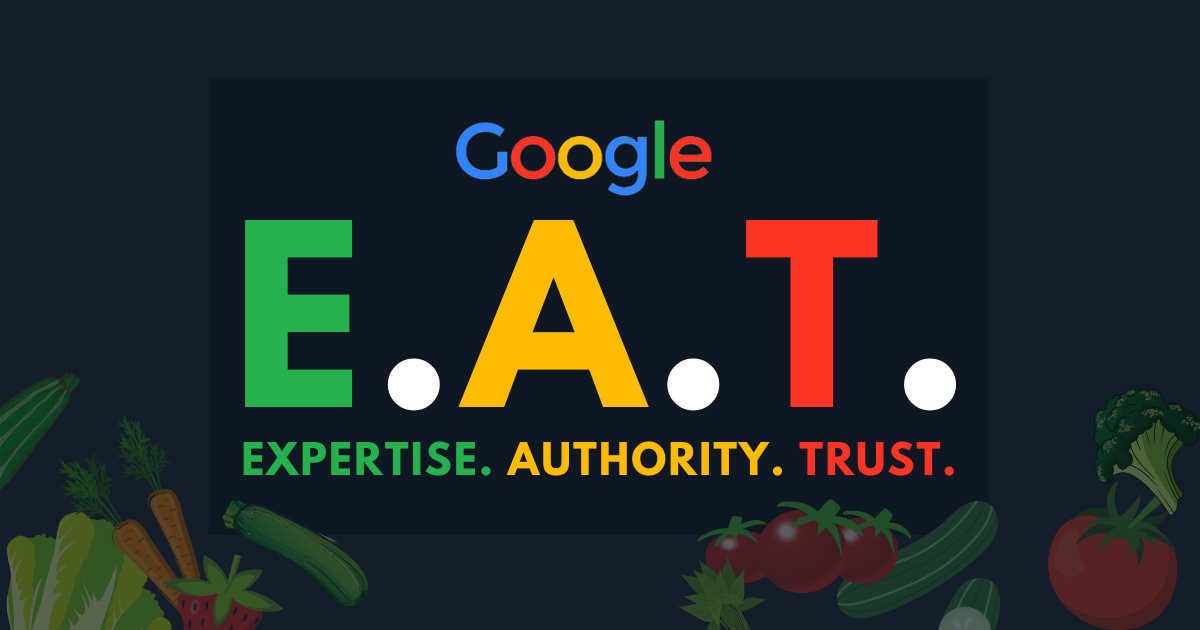What Are Google Quality Guidelines – The Foundation For Google’s Quality Rankings
If you wish to better your website and its exposure, where do you begin? If you’re not already employing it, search engine optimization (SEO) is a good starting point. To understand how SEO works and is formulated, one must dive into the guidelines that direct it by Google. With the ever-growing number of websites out there, (nearly 2 billion) one can understand the necessity of harnessing SEOs capabilities. In order to keep a finger on the pulse, as well as look forward to the future, Faceless Marketing seeks to shed light on the question: “what are Google quality guidelines?”
What Is SEO? How Is It Established?
As Moz.com explains, “SEO is the practice of increasing both the quality and quantity of website traffic via non-paid search results.” Faceless Marketing previously wrote an article found here you can also view diving further into the subject. Slightly complex and often-evolving, SEO is a subject defined by the search engine (Google) itself.
Google produces the results that we search for via an ‘algorithm’, which updates rather often. These algorithm changes are referred to as something called core updates. Google goes on to define them as “significant and broad changes to search algorithms and systems.” With their most recent core update of March 2020, they’ve introduced some very notable changes. These changes have incurred great strides in terms of user functionality and changed the way websites are designed by developers. There are a few main themes to be discussed in the upcoming sections that delve deeper into Google quality guidelines.
E-A-T: The First Google Quality Guideline

The main pillars that describe what the quality guidelines focus on can be broken down into 4 main topics. The first is known as the acronym E-A-T. This is the focus around Expertise, Authoritativeness, and Trustworthiness. When Google assesses your web page, they do so according to the amount of expertise, authoritativeness, and trustworthiness of the content. This factors in the page’s core content as well as the creator of said information.
So, how does Google go through and establish E-A-T? It is said that the best-known factor is apparently PageRank which is attributed to links. Google may take into account links from other authoritative sites is basically vouching for your page. In essence, you want to ensure you’re putting out content that others will feel good about linking to. Be considerate of this as a general rule of thumb to reference back to. To achieve that capability, it is best advised to undergo thorough research for all articles and attempt to be the original source.
Needs Met: A Metric Of User Satisfaction
The second main pillar for Google’s quality guidelines refers to how well your page satisfies the user’s query. In order to meet ranking for this metric, you need to focus on the applicability of information. Ensure that your content is completely answering the questions searchers are looking for.
The main tip is to be sure to aptly name articles that can match inquiries. Break down information as much as possible and display it as visually clear as well. Plunge into your Google Search Console to explore what keywords are bringing users to your pages. Assessing those keywords and phrases against your landing pages is one way to improve ‘needs met’ ranking. Facilitate your user experience too! Have your content on a single page instead of across numerous pages that force users to click through. This decreases the odds that users go back to search results and view a competitor.
YMYL: Your Money or Your Life

Content that pertains to a person’s health, finances, or happiness is designated the “Your Money or Your Life” (YMYL) metric. Other topics like nutritional advice, news, safety, and shopping also reside in this category. Search engines with the likes of Google want to send users to trustworthy sites. Rightfully so, legitimacy and accuracy are a crucial factor for this content. Publishers on influential sources for health, science, and living advice have a particularly high standard for accuracy and consensus. To elaborate on this more, the following are examples of YMYL topics provided by Google:
- Health and safety: information regarding medical issues, hospitals, drugs, emergency preparedness, etc.
- News and current events: important topics such as international events, politics, science, technology, business, etc. Be aware not all news articles fall here (e.g., sports, entertainment, and everyday lifestyle topics are generally not YMYL).
- Civics, government, and law: information regarding maintaining citizenries, such as voting information, government agencies, public institutions, social services, and legal issues (e.g., divorce, child custody, adoption, etc.)
- Finance: financial advice or information regarding banking, taxes, investments, retirement planning, loans, or insurance, most sites that allow purchases or money transfers online.
- Shopping: information about or services related to research or purchase of goods/services, particularly sites permitting online purchases.
- Other: other topics related to big decisions or important aspects of people’s lives can also be considered YMYL. These include pages on housing information, nutrition and fitness, education and college applications, job hunting, etc. Please exercise caution and do your research!
Page Quality: How Your Page Is Viewed
This one is a necessity that should already be on most website’s radar. In today’s day and age, your site must be responsive. Low-quality responses and signals can hurt your website in the eyes of quality. The lowest rating available is automatically assigned to pages that are not mobile-friendly. Additionally, it is important to note that clickbait and misleading titles will harm your quality (refer back to E-A-T here too.) Should your page have ad-blocked content or obtrusive ads as well, these are also considered low-quality signals.
SEO and reputation management: Active social presence helps with SEO
Social media can help a brand amplify content, which is king under the new Google algorithms. Quality content that engages the audience to like, share, click and comment on can result in more backlinks, which helps with SEO. Social media profiles can also help brands display trustworthiness, one of the three pillars of E-A-T.
Google’s algorithms factor in reviews in SEO rankings, assessing the trustworthiness that is another crucial component of E-A-T. The imperative here for businesses is to become laser-focused on increasing and improving reviews. As part of this focus, businesses should keep an eye on company ratings on sites such as Google Places, Facebook, Yelp, and Tripadvisor and aim to have between 5-10 reviews with an average score of 4.5 stars or higher. It is also important to note that, in reputation management, it is not only critical for a business to have reviews posted; it is just as vital to respond to these reviews.
Citations Google’s algorithm uses citations to verify the existence, legitimacy, and trustworthiness of a business. Citations referencing a business’s name, address, and phone number (NAP) online across many relevant and trusted websites signal to Google’s algorithm that the business exists and is a key ranking factor for local SEO.
There are many business directories and other sites where citations can appear. Some of the major directories include:
- Apple Maps
- Yelp
- Yellowpages
How to choose the right directories?
- Choosing the right directories and ensuring that business information is updated and accurate is important to local search rankings.
- This includes existing Google Search signals such as mobile-friendliness, safe-browsing, HTTPS, and intrusive interstitial guidelines.
- It also includes metrics in Google’s Web Vitals to do with a site’s loading speed, interactivity, and visual stability.
- Among the steps to take are optimizing for mobile, improving page speeds, CTAs, and alt text for images.
Yet To Come In 2021: The Page Experience
Recently hinted at by Search Engine Watch, Google has plans to introduce another factor into their quality guidelines. The ‘page experience’ factors in a few different signals on the user’s side. This includes all aspects of how users experience your page – detailing how good or poor it is. The pre-existing Google Search signals of mobile-friendliness, safe-browsing, and HTTPS guidelines are present here. But with this guideline, other metrics are taken into account. The additional focus takes on three facets:, interactivity, visual stability, and loading.
- Loading, in this context, measures perceived load speed. That’s the point in the page load timeline when the main content is likely to have loaded.
- Interactivity is the time from when a user first interacts with a page – a click or a tap, for example — to the time when the browser begins processing that interaction.
- Visual stability has to do with preventing annoying and unexpected movement of page content.
The trouble with bad page experience’s
Before we get down to understanding how to improve page experience, let’s understand what a bad page experience is. Slow page speeds: You know how frustrating it can be to click on a search result and then wait for a page to load. It may be a few seconds, but it feels like an eternity. Chances are, your consumers feel the same way and are put off.
Bad structure and design: Even if the page loads quickly, there are times when it can be confusing to navigate. This could be because the design is cliched or just puzzling. There could be too many pop-ups. There could be no proper content structure. Looking for information here could be like looking for a needle in a haystack.
Lack of engagement. Unfortunately, too many websites simply assume that their only purpose is to sell. But today’s consumer wants to be engaged with, wants to be entertained, and wants to be understood. That’s why empathy and likeability are important factors.
Faceless Marketing
Faceless Marketing is a top digital marketing company that offers a full range of marketing services. We understand how important budgets are and how necessary it is to maintain consistency once a budget has been set in place. Overall, our team completes the planning in advance, share our thoughts with you and do what it takes to complete the project, on time & within budget. Hire one of the best marketing companies in the United States today and join the list of our satisfied clients.
Faceless Marketing is the marketing firm you can depend on to give you the best results and greatest ROI. Reach out to Faceless Marketing for a consultation today. Get a FREE quote on any of our services from SEO to web design and printing. Call 1-800-357-1299 or Shoot us a Message Here.






